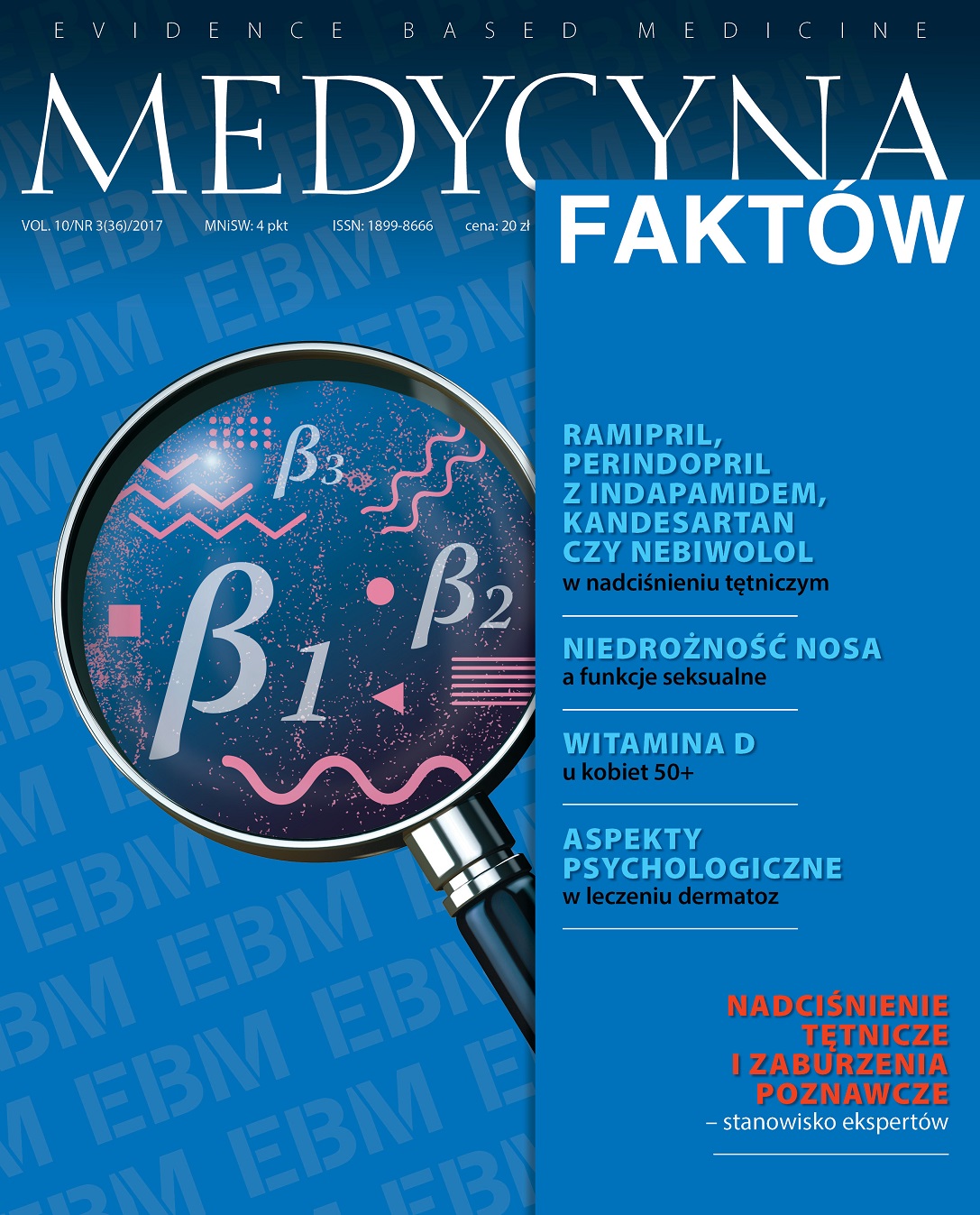Skuteczność i bezpieczeństwo działania propafenonu – punkt widzenia ekspertów Opis przypadku
##plugins.themes.bootstrap3.article.main##
Abstrakt
Propafenon to lek antyarytmiczny z grupy IC według Vaughana-Williamsa. Hamuje szybki prąd sodowy w początkowej fazie potencjału czynnościowego. Podstawowymi wskazaniami do jego stosowania są nadkomorowe zaburzenia rytmu serca, w tym kardiowersja farmakologiczna i zapobieganie nawrotom AF w leczeniu przewlekłym. Przeciwwskazaniami są strukturalna choroba serca, przede wszystkim z niewydolnością, choroba wieńcowa. Propafenon jest bezpieczny pod warunkiem ścisłego przestrzegania przeciwwskazań i monitorowania w początkowym etapie leczenia.
##plugins.themes.bootstrap3.article.details##
Jak cytować
Wsół, A. B., Sapilak , B. J., & Kuch , M. (2017). Skuteczność i bezpieczeństwo działania propafenonu – punkt widzenia ekspertów . Medycyna Faktów , 10(3(36), 233-236. Pobrano z https://journalsmededu.pl/index.php/jebm/article/view/2130
Numer
Dział
Artykuły
Copyright © by Medical Education. All rights reserved.
Bibliografia
1. Cardiac Arrhythmia Suppression Trial (CAST) Investigators. Preliminary report: effect of encainide and flecainide on mortality in a randomized trial of arrhythmia suppression after myocardial infarction. N. Engl. J. Med. 1989; 321: 406-412.
2. Femenia F., Palazollo J., Arietta M.: Proarrhythmia induced by propafenone: what is the mechanism. Indian. Pacing Electrophysiol. J. 2010; 10: 278-280.
3. Kirchhof P., Benussi S., Kotecha K. et al.: Wytyczne ESC dotyczące leczenia migotania przedsionków w 2016, opracowane we współpracy z EACTS. Kardiol. Pol. 2016; 74: 1359-1469.
4. Kuck K.H., Cappato R., Siebels J., Rüppel R.: Randomized comparison of antiarrhythmic drug therapy with implantable defibrillators in patients resuscitated from cardiac arrest: the Cardiac Arrest Study Hamburg (CASH). Circulation 2000; 102(7): 748-754.
5. Wiesfeld A.C., Ansink J.M., van Veldhuisen D.J. et al.: Broad complex tachycardia during treatment of atrial fibrillation with a 1c antiarrhythmic drug: ventricular or supraventricular proarrhythmia? Int. J. Cardiol. 2006; 107: 140-141.
2. Femenia F., Palazollo J., Arietta M.: Proarrhythmia induced by propafenone: what is the mechanism. Indian. Pacing Electrophysiol. J. 2010; 10: 278-280.
3. Kirchhof P., Benussi S., Kotecha K. et al.: Wytyczne ESC dotyczące leczenia migotania przedsionków w 2016, opracowane we współpracy z EACTS. Kardiol. Pol. 2016; 74: 1359-1469.
4. Kuck K.H., Cappato R., Siebels J., Rüppel R.: Randomized comparison of antiarrhythmic drug therapy with implantable defibrillators in patients resuscitated from cardiac arrest: the Cardiac Arrest Study Hamburg (CASH). Circulation 2000; 102(7): 748-754.
5. Wiesfeld A.C., Ansink J.M., van Veldhuisen D.J. et al.: Broad complex tachycardia during treatment of atrial fibrillation with a 1c antiarrhythmic drug: ventricular or supraventricular proarrhythmia? Int. J. Cardiol. 2006; 107: 140-141.
